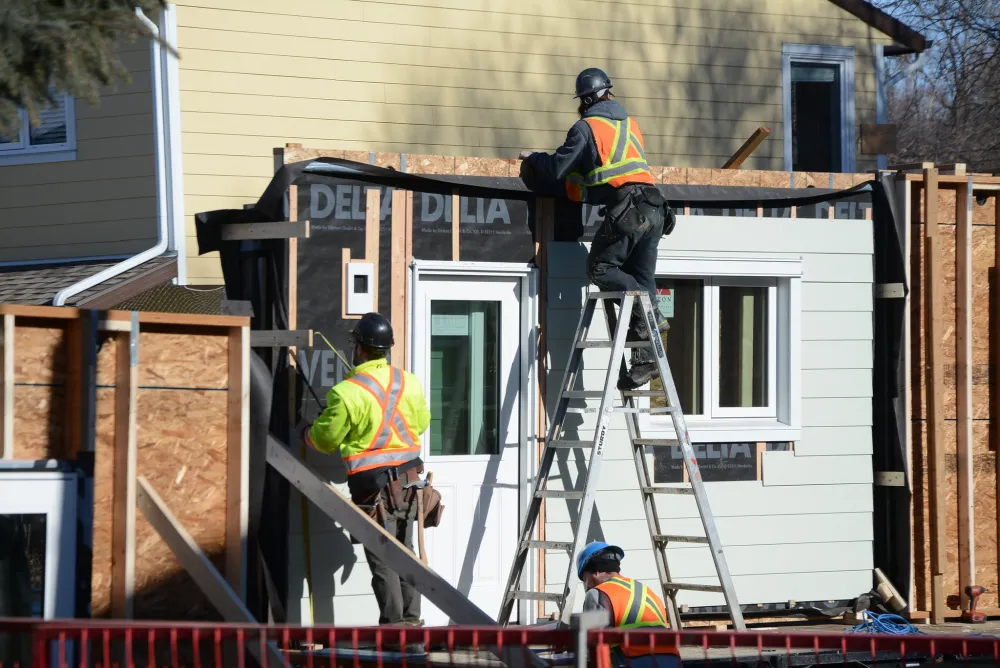Today’s launch of Canada's Green Buildings Strategy is an important step for achieving affordable, reliable, climate-safe homes. Over the past several years, the Pembina Institute has worked closely with all orders of government and across sectors to ensure the right policies and regulations are in place to best support the Canadian building sector to meet their climate targets.
We applaud the federal government’s commitments to demonstrate leadership in energy efficient and low carbon buildings while starting to flesh out the tools needed for all homes to be climate-safe and affordable. Deep retrofits are the only climate actions that ensure Canadian homes are resilient, climate-safe, and affordable to heat and cool. Supporting energy efficiency and the adoption of highly efficient heating systems will help everyday Canadians and utilities save money.
Households win as they spend less on bills and on maintaining separate heating and cooling systems, and can reduce utility connection costs if they fully electrify. Utilities win as they save on system expansion costs through demand side management, investing in energy efficiency, demand response and demand flexibility. At the same time, building right the first time saves money and avoids retrofitting down the line. This includes using materials and components that are low in embodied carbon, or even better that sequester carbon. We have a once in a lifetime opportunity to make sure Canadians have homes that are ready for our changing climate.
And it’s time to get to work.
Building decarbonization creates good, long-term jobs distributed throughout every region of Canada. The CGBS Inventories the important policy and regulatory work and investment happening at the federal level across departments. The regulatory and funding actions, such as advancing codes and standards while investing in equipment like heat pumps, bundled into the CGBS are a start to what is needed to stimulate market transformation for both new construction and retrofits.
We look forward to continued budgetary supports and regulatory actions such as modernization of Energy Efficiency Act and incorporation of resilience measures in codes. And we will continue to work with government on setting housing adaptation targets and a system of accountability, which remains a gap in the National Adaptation Strategy (NAS).
Decarbonizing and adapting Canadian homes and buildings for a changing climate will require a multi-sectoral effort in every community, urban, rural or remote. Our hope is that Canada’s Green Building Strategy opens the dialogue with other orders of government on strategies to ensure every Canadian can live in a home that is healthy, safe, climate resilient and affordable to heat and cool."
Learn more: https://www.canada.ca/en/natural-resources-canada/news/2024/07/government-of-canadas-new-canada-green-buildings-strategy-a-plan-to-help-canadians-save-money-on-their-energy-bills.html
Let’s get this right.
Launch of Canada's Green Buildings Strategy
An important step for achieving affordable, reliable, climate-safe homes
July 16, 2024
Article

Related Research & Analysis

Buildings, Equitable Transition, Transportation
November 20, 2025
Article
Climate as a lever to deliver on emerging Canadian priorities
Climate action is the answer to Canadians’ most pressing concerns


Buildings, Electricity, Equitable Transition, Oil & Gas, Transportation
October 18, 2024
Article
The new energy economy has arrived, and Canada must pay attention
International Energy Agency’s 2024 World Energy Outlook full of proof points of the scale and pace of the world’s transition to clean energy




Programs
Leading the transition to clean energy requires advancing solutions to today’s energy challenges from various angles.
The Pembina Institute has spent four decades working to reduce the environmental impacts of Canada’s energy production and to provide actionable ideas on how to implement clean energy.

